Are you debating whether to watch a movie outdoors on a sunny day or take the projection indoors? Whether it’s for an outdoor cinema experience or just some fun with friends at home, understanding how many lumens your projector needs for daylight can make all the difference. We’re here to fill you in on what all these numbers mean and how to make sure your outdoor cinematic dreams come true – no matter what time of day it is!
How Does the Projector Run?
Projectors are devices used to project images onto a wall or screen, for example in presentations and movies. They have become increasingly popular as a way to enjoy multimedia content without having to invest in an expensive television or display system. But how do they work? [1]
At the heart of every projector is a lamp, containing a filament that produces light when electricity passes through it. This light is then passed through a series of lenses and mirrors to project the light onto the screen or wall. The intensity and direction of the projected image can be adjusted by manipulating these lenses and mirrors, allowing you to control the size, shape, brightness, contrast, and focus of the image being projected.
Projectors also have focusing mechanisms that allow for more precise adjustment of the image. By adjusting the focus, it is possible to make an image appear sharper or blurrier, depending on which setting you prefer.
They typically feature a variety of inputs and outputs, making them even more versatile. For example, they may have HDMI ports for connecting various devices, such as a laptop, gaming console, or streaming device. They may also have audio outputs for connecting a pair of speakers or headphones. [2]

What Functions Does the Projector Perform?
Projectors are an incredibly powerful tool for displaying images, videos, slideshows and presentations. They can be used to project onto any type of surface – walls, ceilings, boards or even screens. But what functions does a projector perform?
- Projecting images and videos: Projectors are used to display digital images onto any type of surface. They can project anything from text documents and slideshows to movies, video games or photo montages.
- Larger image sizes: By using a projector, you can create larger images than if you were just using your computer’s display. This makes them ideal for presentations or displays in larger venues, such as classrooms and auditoriums.
- Adjustable brightness: Most projectors are able to adjust their brightness levels, allowing you to customize the visuals for different environments or needs.
- Input/output options: Projectors can be connected to a variety of inputs, including HDMI, VGA, USB and more. This makes them incredibly flexible for both professional and private use.
- Portability: Many projectors are also lightweight and portable, allowing you to move them wherever you need them for presentations or displays. [3]
How to Pick the Best Projector?
When it comes to choosing the best projector for your needs, there are several factors you should consider. From resolution and brightness, to contrast ratio and connectivity options, here are some key things to keep in mind when making your selection:
- Resolution – The most important factor when picking a projector is the resolution. This refers to the number of pixels the projector produces, which will determine the image’s clarity. A higher resolution means a sharper and more detailed image, so make sure to choose one that meets your projectors specific needs. [4]
- Brightness – The amount of light produced by the projector is referred to as brightness. Depending on how you intend to use your projector (e.g., in a dimly lit or brightly lit room), you’ll want to consider the different brightness levels available.
- Contrast Ratio – This refers to the ratio between the darkest and lightest spots on a projected image, which will determine how clear an image appears in a variety of lighting conditions. When choosing a projector, make sure to select one with an adequate contrast ratio for your needs.
- Connectivity Options – You’ll also need to consider the projector’s connectivity options, such as HDMI, VGA, and USB ports. Most modern projectors will come with a variety of connection ports so you can easily connect it to your laptop or other devices.
- Price – Last but not least is price. There are projectors available at all price points, so be sure to consider how much you’re willing to spend. While higher-end models may have more features and better quality, they typically cost more as well. [5]

What Types Of Projectors Are Available?
Projectors are a great way to share presentations, media, and other content with large groups of people. Whether you need an easy-to-use device for the office or a full-featured model for more professional settings, there’s likely a projector available that will meet your needs. Here is an overview of the different types of projectors currently available on the market.
LCD Projectors
LCD (Liquid Crystal Display) projectors produce images using three separate liquid crystal panels and one white panel, called a light engine, to create an image on the screen. These types of projectors are typically more affordable than other models but may not have as good of picture quality or brightness levels as other projector types. However, LCD projectors are still a great option for home use or small business presentations.
DLP Projectors
DLP (Digital Light Processing) projectors use tiny mirrors that are arranged in an array and reflect light through a lens to produce the image on the screen. These types of projectors typically offer very good picture quality and can be extremely bright, which makes them a great choice for larger venues. They can also be used in 3D applications, making them a popular choice for movie theaters and home entertainment systems.
LED Projectors
LED (Light Emitting Diode) projectors use light emitting diodes as the light source instead of traditional bulbs or lamps. This makes them much more energy-efficient and also eliminates the need for lamp replacements. LED projectors typically produce an excellent picture quality and are very bright, making them ideal for both home use or professional applications.
Laser Projectors
Laser projectors offer the highest level of image clarity and brightness currently available on the market. They use a combination of red, green, and blue laser diodes to generate the image, making them extremely long-lasting as there is no need for lamp replacements. Laser projectors are also more energy-efficient than other types of projectors and can produce very large images even in bright environments. [6]
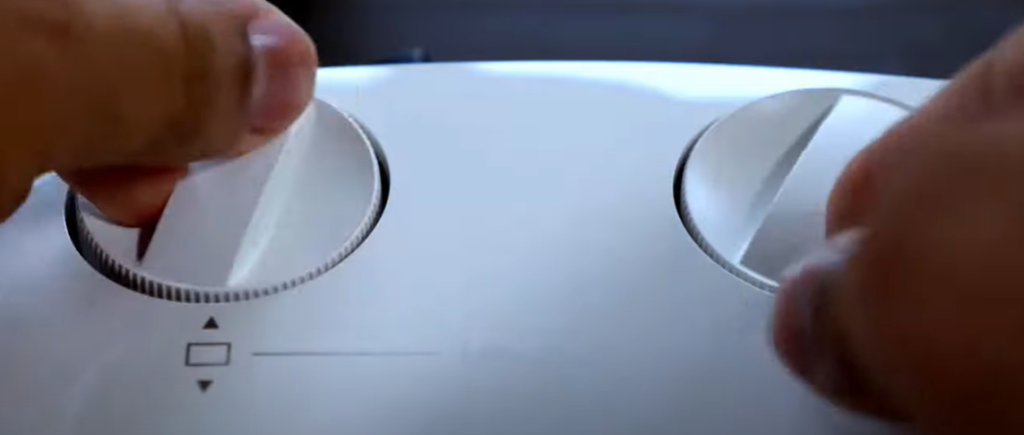
Pros & Cons of Different Projector Types
If you’re still unsure which type of projector is best for your needs, here’s a quick look at the pros and cons of three common types:
LCD Projectors
Pros:
- have a good brightness level, making them suitable for use in well-lit rooms.
- offer excellent color accuracy and sharpness, making them great for showing detailed images or videos.
- relatively affordable compared to other projector types.
Cons:
- due to their bright light output, LCD projectors can cause eye fatigue over time.
- a cooling fan is necessary to prevent the projector from overheating, which can be quite noisy.
- the life expectancy of an LCD projector is typically lower than other types of projectors due to the heat generated by the bulbs used in these models.
DLP Projectors
Pros:
- known for their superior image quality.
- offer bright, vibrant colors and excellent contrast ratios, making them ideal for displaying high-definition images and videos.
- more energy-efficient than other types and tends to have a longer life expectancy due to the lack of bulbs used in their construction.
Cons:
- more expensive than other types of projectors.
- due to the high brightness output, they may cause eye fatigue over time.
- require a regular cleaning and maintenance schedule to keep them running optimally.
LED Projectors
Pros:
- offer extremely long life spans due to their energy-efficient bulbs.
- very bright and colorful, making them great for displaying detailed images and videos.
- tend to be more affordable than other types of projectors.
Cons:
- generate a lot of heat, which can reduce the lifespan of the projector.
- they are not as bright as other types of projectors, LED models may not be suitable for use in very well-lit rooms.
- require a cooling fan to prevent overheating, which can be quite noisy. [7]

What Projects to Watch on the Projector?
If you are looking for projects to watch on the projector, here are our top 10 picks! These projects have been carefully chosen from various genres and in order of popularity.
- Black Panther – This superhero film follows T’Challa as he returns home to the isolated, technologically advanced African nation of Wakanda to take his place as King.
- Star Wars: The Last Jedi – This is the second installment of the newest trilogy in the Star Wars saga and follows Rey as she discovers her true parentage, while Luke Skywalker deals with a bigger battle between good and evil.
- Wonder Woman – Wonder Woman showcases Diana Prince’s journey from an Amazonian warrior to a modern-day superhero.
- Coco – In this heart-warming Pixar movie, Miguel and his family journey to the Land Of The Dead to discover the real story behind his great-great grandfather’s past.
- Get Out – This horror movie follows Chris as he visits his girlfriend’s family for the first time and discovers something dark and sinister lurking beneath the surface.
- The Greatest Showman – Hugh Jackman stars in this musical drama about P.T Barnum, a struggling artist who turns his dreams into an incredible circus.
- Lady Bird – This coming-of-age movie follows Christine “Lady Bird” McPherson as she navigates her senior year of high school and her tumultuous relationship with her mother.
- Moonlight – This Academy Award-winning movie follows Chiron as he grows up in Miami, struggling to find his identity and place in the world.
- The Shape of Water – This romantic fantasy film follows Elisa Esposito, a mute woman working in a secret government laboratory who discovers an otherworldly creature that she must protect from her cruel boss.
- Baby Driver – This critically acclaimed action-comedy follows Baby, a getaway driver who falls in love with Debora and must choose between staying loyal to his crime family or following his heart. [8]
Can You See a Projector in Daylight?
Projectors are a great way to share content with larger audiences. However, it’s not always easy to see a projector in bright daylight – the light from the sun can easily overpower images projected onto a wall or screen. So what should you do if you want to ensure your presentation is visible even when there is direct sunlight?
You can also adjust some of the settings on your projector to optimize performance in direct sunlight. For example, you can adjust the contrast and brightness settings to make the projected image easier to see. If possible, try finding a room with window shades or blinds that you can keep closed during your presentation for maximum visibility. [9]
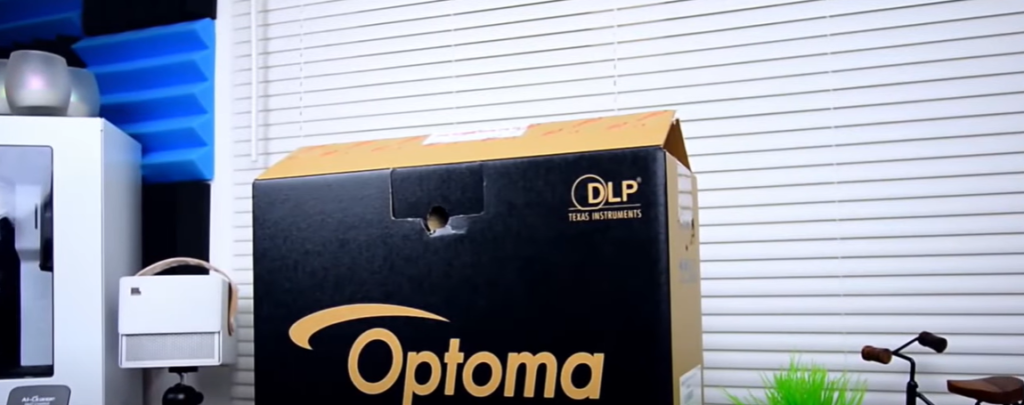
What Are Lumens?
Lumens is a measure of the total amount of visible light emitted by an electronic device such as a projector. A higher lumen rating indicates that more light will be produced and the image projected will be brighter when viewed in direct sunlight or other bright conditions. The most powerful projectors that are available today can produce up to 6000 lumens, making them ideal for use in daylight conditions.
It is crucial to remember that the lumen rating of a projector does not directly equate to how well it will perform in daylight conditions. It is also worth considering other factors such as contrast ratio and screen type when choosing a projector for use in daylight. The contrast ratio of a projector determines how well it can display details in dark and bright areas of an image, while the type of screen used will dictate how much light is reflected back to the viewer. [10]
7 Factors To Consider When Adjusting The Lumen Of A Projector In Daylight
Adjusting the lumen of a projector in daylight can be tricky, especially if you are trying to achieve optimal brightness for your presentation. Many factors need to be taken into account when setting the projector’s lumen level. They include:
Ambient lighting
The amount of natural daylight in the room should be factored into the projector’s lumen level. If there is a lot of sunlight coming through the windows, it will need to be considered when adjusting the projector’s settings.
Projection surface
Another factor to consider is the type of projection surface. Different materials will reflect light differently, and you may need to adjust the projector’s lumen level accordingly.
Room size
The larger the room, the more light that needs to be projected from the projector. Consider how much actual space there is in the room when setting the lumen level, as you may need to increase it to get a clear image.
Color temperature
The color temperature of the projector’s bulb should be taken into account. Different bulbs can affect how much light is projected from a projector, and you may need to adjust its settings accordingly.
Projector brightness settings
When setting up a projector, it is important to take into account its brightness settings. Different devices may have different brightness levels, so you should check the projector’s manual for its recommended setting. This will help to ensure that your presentation is as clear and bright as possible.
Window coverings
If the room has windows, consider installing window coverings to reduce the amount of natural light entering the space. This will also help to reduce glare and reflection on the projection surface, allowing for a clearer image.
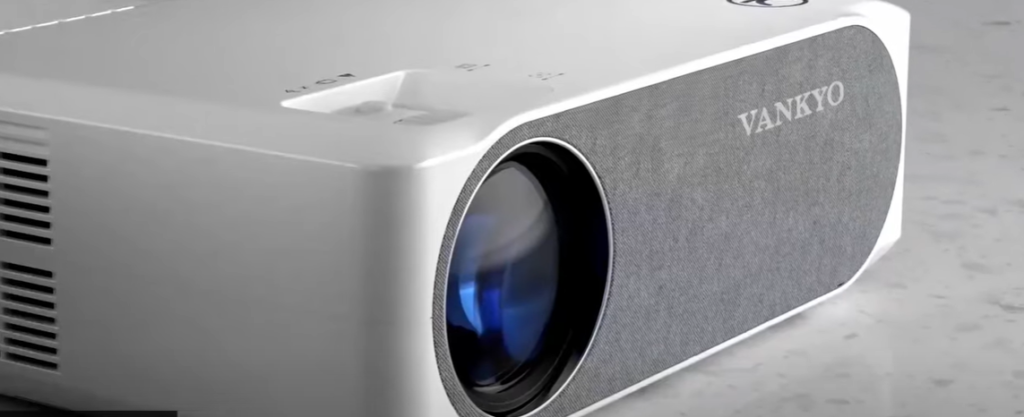
Contrast ratio
Consider adjusting the projector’s contrast ratio as well. This will help to ensure that all colors are displayed accurately and can be adjusted according to your needs. [11]
How to Create the Perfect Place to Watch a Movie on a Projector?
Creating the perfect place to watch a movie on a projector is all about setting up the right environment and technology. Whether you’re planning an outdoor backyard movie night or having a screening in your living room, here are some tips for getting the best experience with your projector:
- Positioning: Make sure that wherever you are placing your projector has enough space to fit it and enough surface area for the screen. You should also make sure that there are no obstructions in between the projector and the screen, such as furniture, windows or lights.
- Lighting: Projectors rely on natural light sources to work best, so avoid placing your projector near a window or under bright overhead lighting. You can also dim all other lights in the room to create a more cinematic atmosphere.
- Sound: Getting good sound is essential for a great movie night experience. You can use standalone speakers, your TV or even your projector if it has built-in audio capabilities.
- Connections: Check that your projector has all the necessary connections and cables for the device you’re connecting it to (e.g. laptop, HDMI cable). Make sure your device is compatible with the projector’s resolution and image size settings for the best quality.
- Screen: If you’re having an outdoor movie night, make sure you purchase a screen that can withstand humid or windy conditions. For indoor screenings, you can use a large TV, a pull-down projector screen or simply a white wall. [12]
FAQs
How many lumens should a daylight projector be?
The amount of lumens needed for a daylight projector largely depends on the size of the room where you want to project. Generally speaking, a daylight projector should have at least 2,000 lumens in order to be visible in well-lit rooms or outdoor environments. For large venues with bright lights, you may need even more lumens to make sure your images and colors are crisp and vibrant. Ultimately, the number of lumens needed will vary depending on the size and brightness of the space you’re projecting in.
How many lumens does an outdoor daytime projector need?
Outdoor projectors need to be bright enough to cut through direct sunlight, while indoor projectors only need to battle against ambient light. For daytime outdoor projection, you’ll want a projector with at least 5,000 lumens of brightness. Ultra-bright models up to 25,000 lumens are also available for use in environments with extreme sunlight or high ambient light levels. To find the right projector for your needs, consider both the lumen count and contrast ratio. A higher lumen count will help ensure the picture is bright enough, while a higher contrast ratio will offer better color accuracy and sharper images.
Is 2000 lumens bright for a projector?
Generally speaking, 2000 lumens is considered an acceptable level of brightness for most home theater projectors. For large venues or rooms with high levels of ambient light, however, higher brightness levels of 3000 lumens or more may be required.
How far can 7000 lumens reach?
The projector is an incredibly powerful tool that can project light up to 7000 lumens. This amount of light makes it possible for the projector to reach incredible distances without any loss in brightness or clarity. It’s perfect for large-scale indoor and outdoor events, and can light up entire arenas with ease. With its impressive lumen output, the projector has become one of the most popular projectors on the market today.
Useful Video: How Many Lumens Does My Projector Need?
Wrapping Up
You now have a better understanding of how many lumens a projector needs for daylight use. Consider the factors mentioned in this article – learning room size, level of sunlight, and type of projection surface – to determine the ideal number of lumens for your projector. Research different types of projectors on the market to meet your needs and to ensure you’re making the practical and economical choice. In the long run, buying a higher lumen projector will save you time and money. Gathering research today will help you make the best decision tomorrow when it comes to selecting a projector that has enough lumens for optimal daylight viewing. Go out there and find yourself the right projector to fit your budget so you can start enjoying clear visuals in sunny conditions!
References:
- https://www.cnet.com/tech/home-entertainment/projector-setup-tips-how-to-get-the-biggest-best-image-for-movie-night/
- https://www.lifewire.com/use-projector-as-tv-5121026
- https://unacademy.com/content/bank-exam/study-material/computer-knowledge/projector/
- https://www.purple-cat.co.uk/projector-buying-guide-how-to-choose-a-projector/
- https://www.nytimes.com/wirecutter/blog/how-to-pick-the-right-projector/
- https://www.moglix.com/articles/types-of-projectors-based-on-their-applications
- https://worldtechjournal.com/3-main-types-of-projectors-use-advantages/
- https://www.cnet.com/tech/home-entertainment/tv-vs-projector/
- https://thehometheaterdiy.com/projector-outside-during-the-day/
- https://integral-led.com/en/content/what-are-lumens
- https://www.archute.com/how-many-lumens-do-you-need-to-project-in-daylight/
- https://tech.hindustantimes.com/how-to/how-to-set-up-a-projector-for-great-content-at-home-71590244947239.html





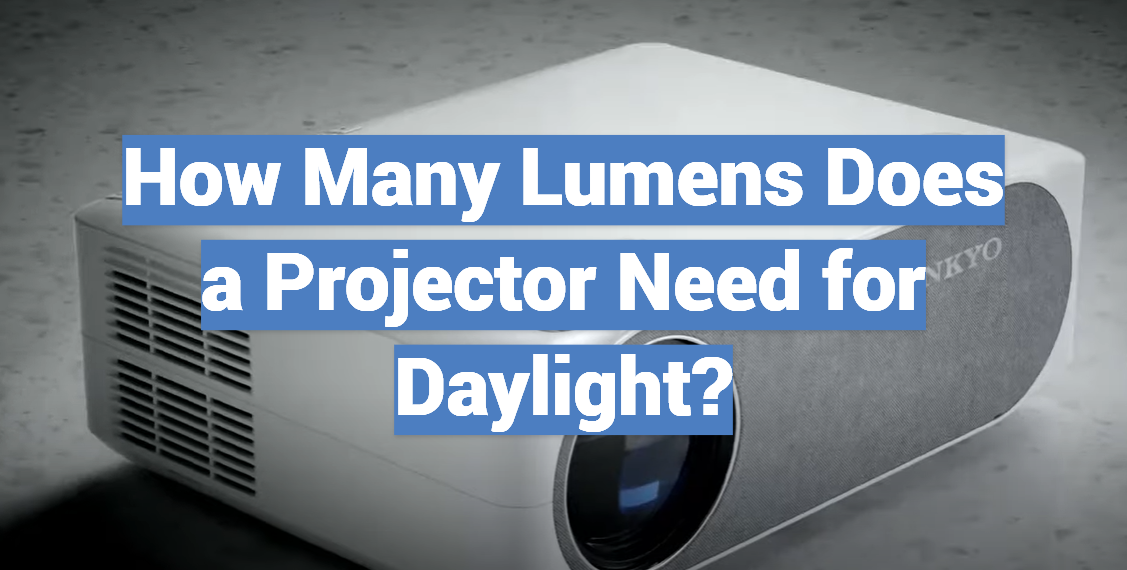

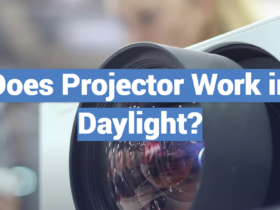
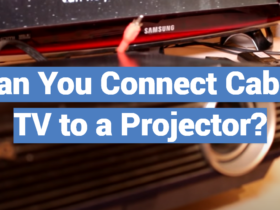

Leave a Review